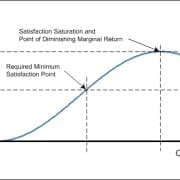How to Create a Database in Smart Sheets for Your Business

“What is a database” might be your first question after reading the heading. So, to clear 0this query, a database is defined as “a structured set of data held in a computer, especially one that is accessible in various ways,” says Google. However, a database in smart sheets means a set of data that is easily accessible through multiple paths. It is held in a single central source that can be shared online with others at their required level of access. Smart sheets provide a platform for businesses and employees to connect on a no-code system, meaning that everyone with access can design the solutions they need. Furthermore, smart sheet platforms are supported by IT security.
In short, it is a medium to conveniently share your structured data with your team online without a common server or computer. This can benefit your business by keeping everything organized and rightly shared with everyone without a hassle. Smart sheets are used by several Fortune 100 businesses to produce efficient results by integrating collaboration, processes, and data management on a single, secure network.
Businesses have multiple smart sheet options available online that are convenient and have all the above-mentioned modules and features. For example, NocoDB is a medium of a smart sheet that can convert any Structured Query Language (SQL) database into an online smart sheet database. It helps to connect any structured and organized data sources to a globally convenient and accessible smart spreadsheet form. This allows the users to carry on their business data management without any prior professional computer experience like coding etc. It is said to be a great alternative to Airtable. NocoDB is an open-source online database medium that helps create smart sheets, unlike Airtable.
But the real question is, “how do you create a database in smart sheets for your business?” Below shared are a few crucial steps to create your database in smart sheets.
- Set up the sheet as the main source of all business data.
- Form a specific module as per your business requirements. This will help you add data to your master sheet.
- By setting the smart sheet module next, you can enable automation to send reminders or requests timely as directed by you.
- Next, the smart sheet logical module helps you sort automation for mathematical values.
- The smart sheet look-up function helps you split your master sheet into many more sheets according to different niches, departments, etc.
- The smart sheet summary and dashboard modules help you to show the summary of your business’ database on the dashboard.
- You are now ready to put your smart sheet live.
The steps are easy and simple to understand. However, it is important to keep some things in mind before creating a database for business use. These things are as mentioned below:
1. The Type of Content
What kind of data do you need your database to hold (numbers, values, written content, resources, multimedia, etc.)? Make sure you choose an option that helps you decide on the right file types (documents, images, music, photos, etc.) and with a template that makes it simple to access your selected types of data.
2. Amount of Content
You need to know the amount of data that you have so that you can know your file sizes to choose an option that fulfills your storage requirement. Data availability majorly depends upon the version of smart sheets that you are using.
3. Audience
It is important to know who is going to access your smart sheet. The internal team, board of directors, human resources team, etc., will have shared access to it. This will affect the template, organization, tone, and usability considerations.
4. Access
What is the number of people that will need access to the database (consider viewers, editors, and administrators)? You also need to know whether you, as the operator, will have to customize the access settings for each sector or team.
5. Security
It is very important to have security precautions, and for that, you will have to decide if your database contains private or sensitive information. In case of either, you need to choose the option that has the necessary infrastructure to prevent security breaks. Common data encryption techniques are SSL (Secure Sockets Layer) or TLS (Transport Layer Security). You can tell whether a website is data encrypted if the URL is preceded by HTTPS (the S stands for secure).
6. Time Period
It is important to decide the time period that you are storing your data for. How often will it need an update or refresh? This will ensure that the system stays up-to-date and the data is relevant to the current situation of the company.
Benefits of Using Smart Online Database
- You can manage your inventory, quantity, and quality through your online database. You can keep an accurate, punctual, and timely record of every single item available or short. This will reduce the opportunity cost that holding too much inventory incurs.
- You can also create a database of all the employee’s personal information and professional graphs like their contact information, history, performance, growth, and other notes that the human resources may utilize to maintain active information about each employee.
- A database can also be used to assign work and projects to employees so that it can be on track and easily accessible by each employee. In short, it is an easy way to manage resources.
Conclusion
This article clearly highlights that database smart sheets are an efficient tool that is relatively simple to use and allows you to keep track of all team projects and tasks. This software simplifies resource allocation and management and also helps improve the accuracy of project structuring. It has exclusive tools for businesses like tracking software, budgeting, forecasting, dynamic reporting, and so much more to make your business management easier. Online database smart sheets are a vital component for your business as it helps you respond to market opportunities fast, help to build strategies under one platform for potential growth, track progress, and all the other features and options that are specially offered for businesses.










Leave a Reply
Want to join the discussion?Feel free to contribute!